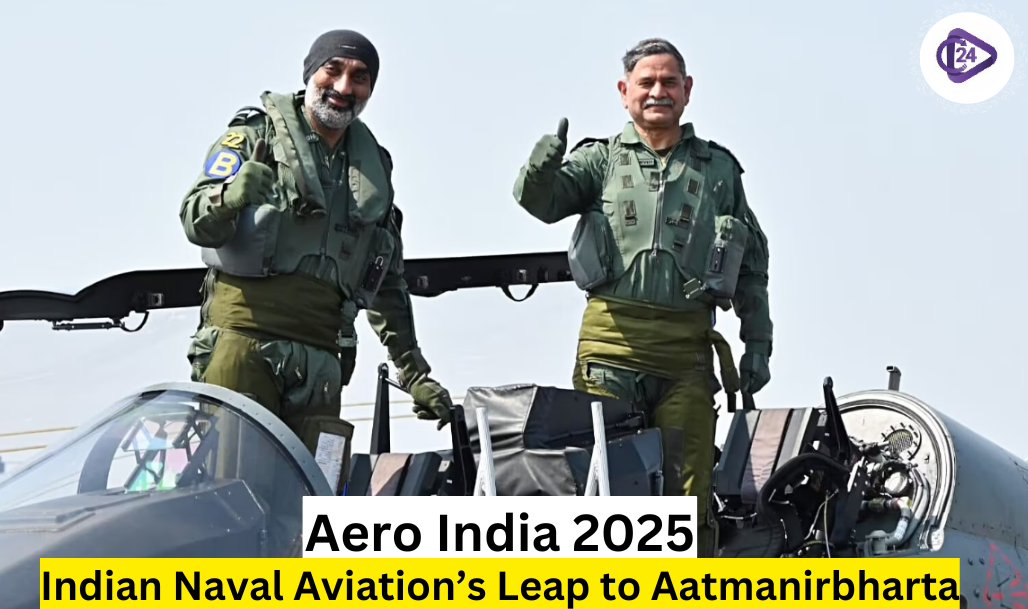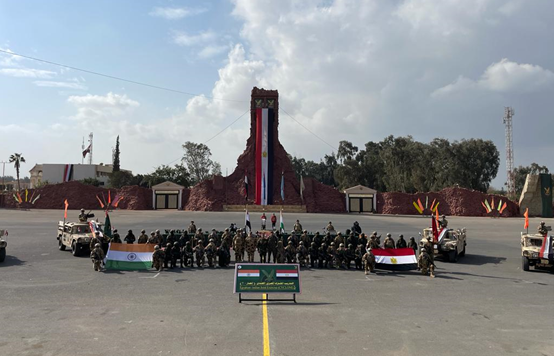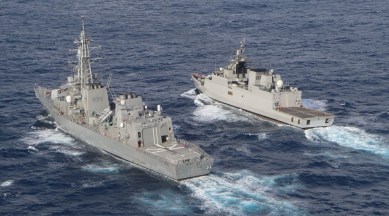
The Indian Navy has strengthened its self-reliance by building over 60 war vessels domestically, reducing dependence on imports. As part of Aatmanirbhar Bharat, Indian Naval Aviation is advancing towards indigenous defense capabilities. At Aero India 2025, the Navy will unveil the ‘Aatmanirbhar Indian Naval Aviation – Technological Roadmap 2047’ to outline its future vision. The event, hosted at Air Force Station Yelahanka, Bengaluru, from February 10-14, 2025, will showcase cutting-edge naval aviation technologies. This marks a major step in India’s journey towards defense self-sufficiency and maritime security.
The Indian Navy emerged as a military force building its vessels to replace importer responsibilities and now constructs more than 60 war vessels at home-based shipbuilding facilities. The mission of Indian Naval Aviation moves forward with self-reliance practices that fit within the objectives of Aatmanirbhar Bharat. During Aero India 2025, the Naval Aviation Division of India plans to release ‘Aatmanirbhar Indian Naval Aviation – Technological Roadmap 2047.’
Aero India 2025: A Premier Aerospace & Defence Event
-
The Air Force Station Yelahanka in Bengaluru will become the host site for Aero India 2025 which will be held from 10-14 February 2025.
-
Through this event, all users together with R&D organizations and academic institutions along with MSMEs startups and industrial partners can work towards achieving the national goal of 'Viksit Bharat 2047'.
-
Indian Naval Aviation will introduce its upcoming technological specifications through three primary domains: Systems, Structures, and Software.
-
Systems
-
Structures
-
Software
-
Showcasing Indian Naval Aviation Capabilities
-
Indian Navy operates throughout vast oceans and high seas which results in less visibility of its aviation platforms to general public observation.
-
The vast open oceans and seas where the Indian Navy operates prevent its aircraft platforms from being noticeable to the public eye.
-
Static exhibitions at Aero India 2025 will display several naval aircraft which include:
-
MiG 29K – 4th generation carrier-borne fighter aircraft.
-
Kamov 31 – Airborne Early Warning (AEW) helicopter.
-
The Seaking 42B along with the MH-60R serve as Anti-Submarine Warfare (ASW) and Anti-Ship helicopters.
-
-
Visitors can see the Light Combat Aircraft (Navy) at the exhibit to witness India's progress in building deck-based combat fighter aircraft.
-
VARUNA formation will conduct a flypast for victory while showcasing aircraft in flight.
-
P8I in the lead.
-
The fighter aircraft MiG 29K along with Hawk 132 will maintain positions on both sides of the formation.
-
Indigenous Defence Projects & India Pavilion
-
The India Pavilion will showcase naval aviation technologies that have been developed in the country which include:
-
Advanced missiles and air-droppable SAR kits.
-
The Air Droppable Containers (ADC) serve as airborne carriers for logistic storage materials.
-
Carrier-borne systems for MiG 29K.
-
Advanced Lightweight Torpedo (ALWT).
-
A scaled model of the Twin Engine Deck-Based Fighter (TEDBF) will showcase India’s upcoming deck-based fighter developed by ADA.
-
-
Startups that develop futuristic naval aviation technologies will utilize their innovative products as part of the exhibition.
-
Strategic Importance of Aero India 2025 for Naval Aviation & Defence
-
Aero India has expanded its reach both in breadth and extent and national importance throughout recent years.
Strategic Importance of Aero India 2025 for Naval Aviation & Defence
-
Indian Naval Aviation along with defense self-reliance will experience significant growth through the upcoming 2025 installation of the event.
-
Indian maritime security together with operational readiness benefits significantly from indigenous capability development according to this event.
Conclusion
The event showcases how Indian Naval Aviation supports Aatmanirbharta by presenting both native progress and future technological pathways. The event promotes collaboration between defense sectors academia and industry to build naval aviation self-reliance in India while developing maritime capabilities for Bharat's secure and Viksit future until 2047.




 Exercise Cyclone 2025 Begins: India and Egypt Strengthen Defense Ties
Exercise Cyclone 2025 Begins: India and Egypt Strengthen Defense Ties 13th Edition of Ekuverin Military Exercise between India and Maldives
13th Edition of Ekuverin Military Exercise between India and Maldives Atmanirbhar Bharat in Defence: India Leap Toward Self-Reliance
Atmanirbhar Bharat in Defence: India Leap Toward Self-Reliance Women Naval Officers Reach Point Nemo: Graveyard of Satellites
Women Naval Officers Reach Point Nemo: Graveyard of Satellites India Ranks 4th in Global Firepower Index 2025, Reflecting Military Strength
India Ranks 4th in Global Firepower Index 2025, Reflecting Military Strength Indian Army Inaugurates Bailey Bridges Over Shyok River, Enhancing Connectivity in Ladakh
Indian Army Inaugurates Bailey Bridges Over Shyok River, Enhancing Connectivity in Ladakh Rajnath Singh Unveils SANJAY Battlefield Surveillance System for Advanced Military Monitoring
Rajnath Singh Unveils SANJAY Battlefield Surveillance System for Advanced Military Monitoring Nine Navies hold joint drills in strategic straits between the Indian Ocean and the Pacific
Nine Navies hold joint drills in strategic straits between the Indian Ocean and the Pacific Bharat Ranbhoomi Darshan: New Initiative to Promote Battlefield and Border Tourism
Bharat Ranbhoomi Darshan: New Initiative to Promote Battlefield and Border Tourism






